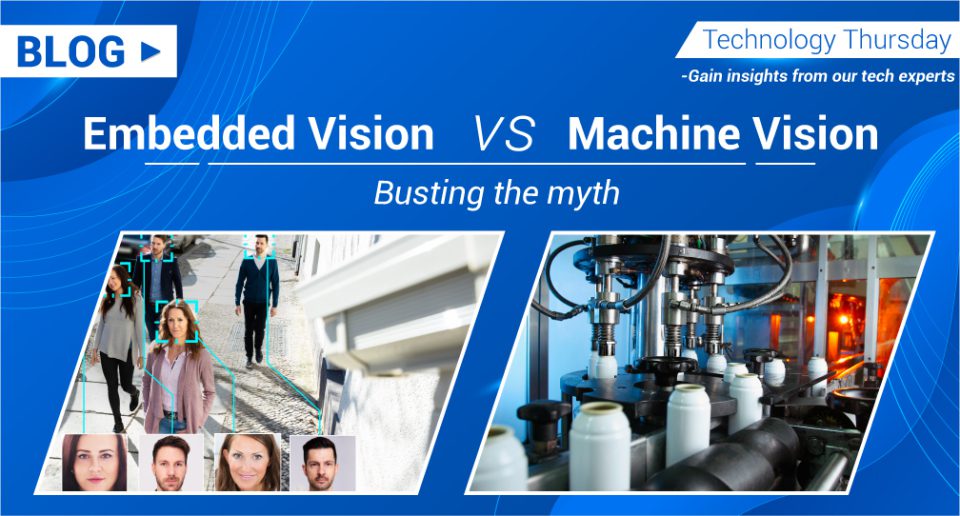Recently, while talking to an old friend about e-con Systems foraying into embedded vision, I was asked one of the most common questions in the world of vision. He wanted to know if embedded vision is the same as machine vision. Now, if you’re a camera engineer or you’ve worked in a related company, you may already know the difference. However, it remains a mystery to many who may be new to the industry or merely outside it.
First, what exactly is machine vision?
Machine vision involves cameras typically connected to a PC over a long cable (like the Ethernet). The camera, interface and the software running on the PC are all standard interfaces. And the processing is fully managed on the PC. It is important to note that the software can be independent of the camera since they follow a common protocol. Hence, you can buy a machine vision-powered camera from a company and the software from another while ensuring superior application performance.
In some cases, the PC may relay the data to the cloud, which can also handle the processing. A popular example of machine vision-based cameras would be those used across factory automation applications.
Now, what about embedded vision?
As far as embedded vision is concerned, the processor and the camera are closely coupled. In these cases, edge computing plays a crucial role too. Sometimes, the entire computing process is purely edge-based since, typically, the applications require quick, intelligent decisions to be taken. A few examples of embedded vision camera use cases are iris recognition systems in airports or video conferencing applications in your office. In some cases, privacy issues can prevent embedded vision devices from relaying the data. For instance, a digital signage system or a people counting system with a camera would be unable to video-stream the data. Instead, it can only extract information on the number of people.
In recent times, the embedded vision space has become much more popular than machine vision – one of the reasons being the explosive growth of AI-based edge computing processors. Today, these processors are much more cost-effective than machine vision cameras, which tend to be expensive.
e-con Systems launched our first embedded vision camera in 2010, e-CAM20_USB. Now, we stand as pioneers with over 11 years of experience and more than 60 successful active products. So, if you have questions about creating game-changing embedded vision-based applications, please write to me at camerasolutions@e-consystems.com.
Related Videos
- https://www.youtube.com/watch?v=nr98QtNXGcM – What is Embedded Vision?
- https://www.youtube.com/watch?v=74ggJTVANNQ – What are Embedded Vision Systems?

Prabu is the Chief Technology Officer and Head of Camera Products at e-con Systems, and comes with a rich experience of more than 15 years in the embedded vision space. He brings to the table a deep knowledge in USB cameras, embedded vision cameras, vision algorithms and FPGAs. He has built 50+ camera solutions spanning various domains such as medical, industrial, agriculture, retail, biometrics, and more. He also comes with expertise in device driver development and BSP development. Currently, Prabu’s focus is to build smart camera solutions that power new age AI based applications.




